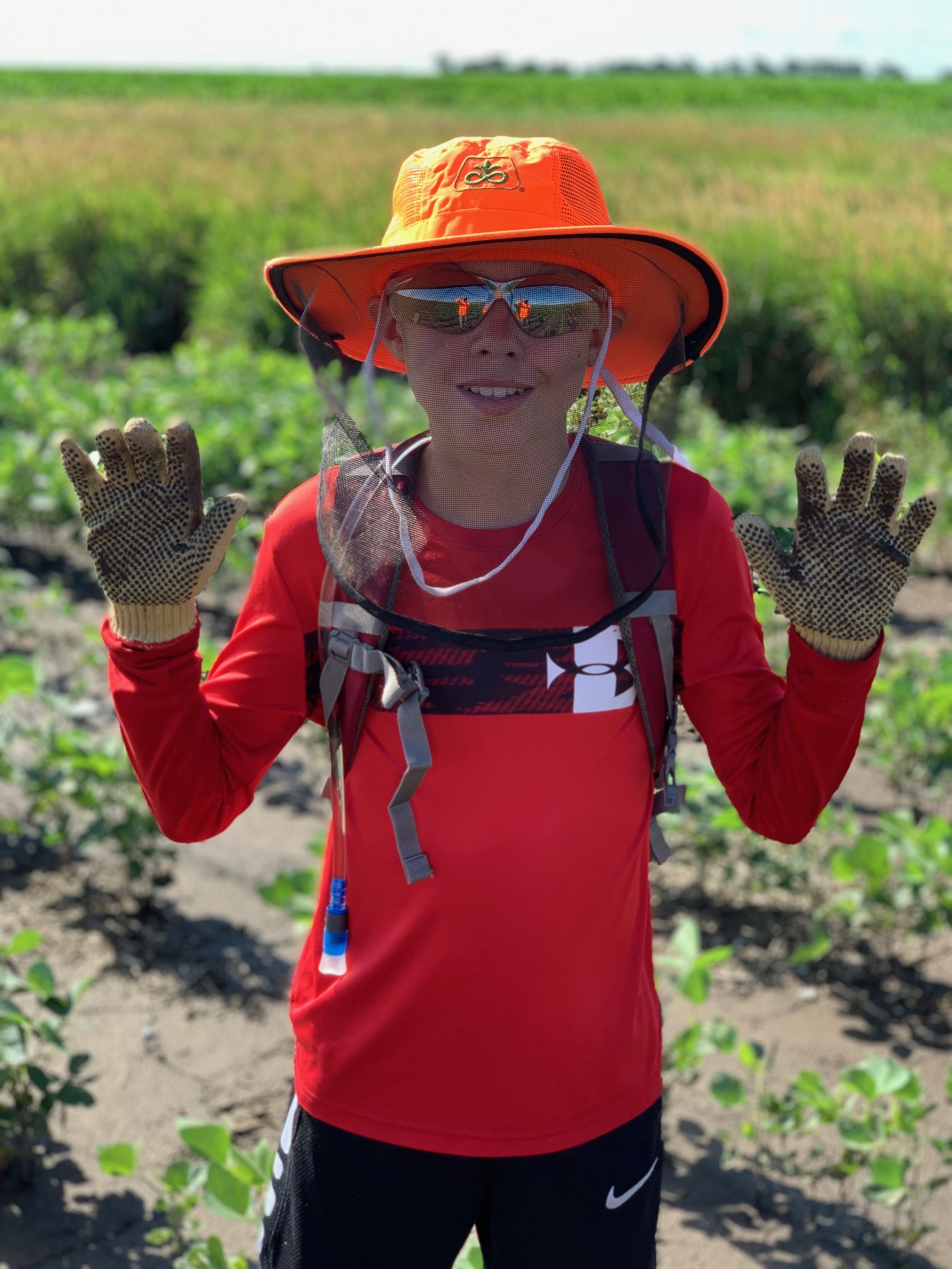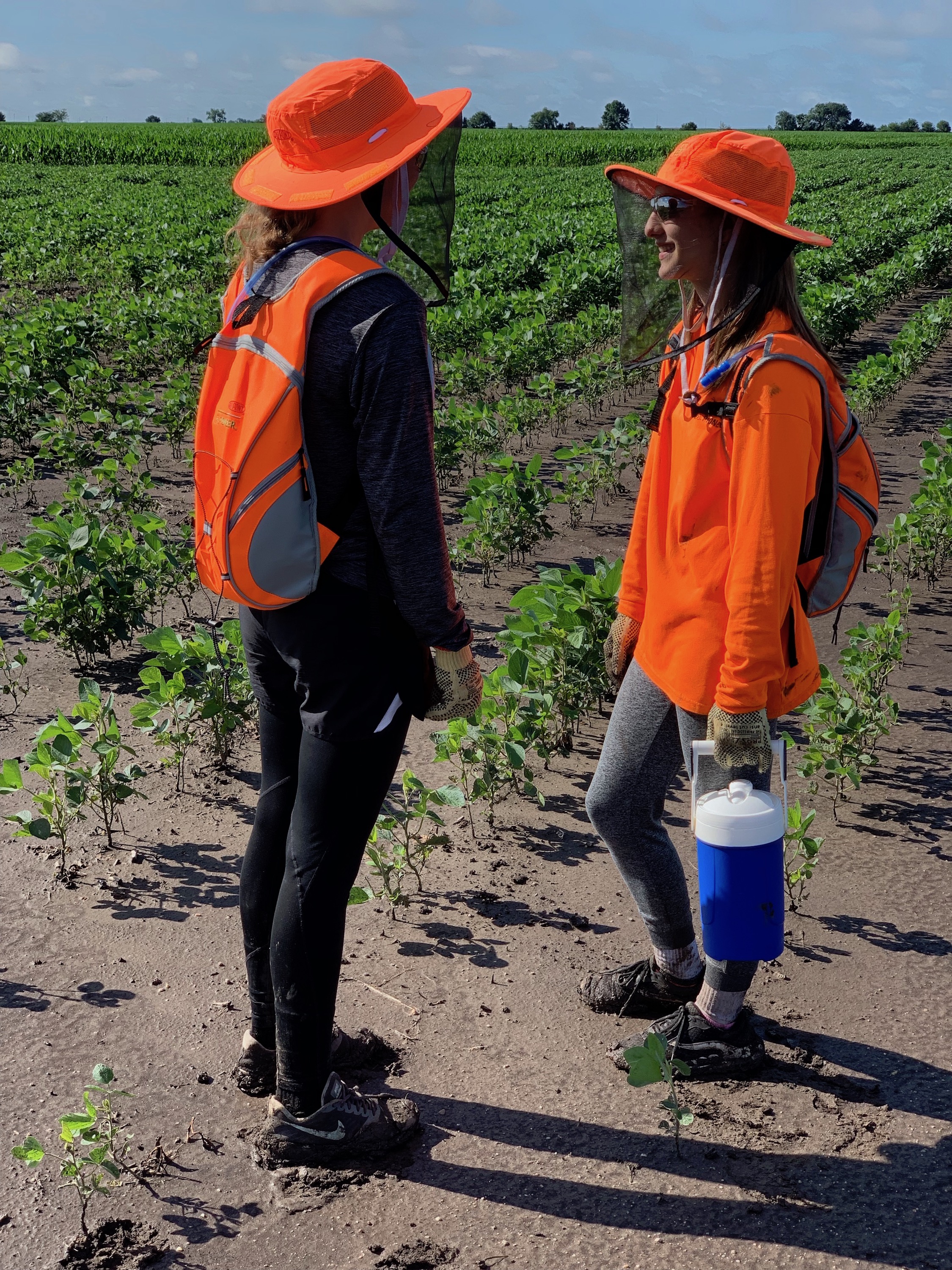Detasseling 101
+ WHAT IS DETASSELING?
- Detasseling is the process of removing the tassel from the top of the corn plant to prevent it from pollinating itself. Each seed cornfield has two varieties of plants that we call the male and the female plants. We remove the tassels from the female rows, so the male plants will pollinate the females to create hybrid seed corn. The pollen in the male tassel falls on the silks in the ears of the detasseled plants to produce kernels of corn.
- Machines called pullers and cutters usually remove 70-90% of the tassels before workers go through the field. Detasselers are “quality control” and remove the tassels the machines left in the field. Sometimes we walk through the field, and sometimes we ride on machines called personnel carriers to do the work.
+ WHEN IS DETASSELING?
- Detasseling usually lasts 3 weeks and generally starts around July 10th . Start dates vary based on factors such as climate and when the corn was planted. Roguing crews usually start the third week of June.
+ WHAT SHOULD I WEAR AND BRING?
- Arms and legs must be covered. Please wear breathable long-sleeve shirts or protective sleeves with a short-sleeve t-shirt. Instead of jeans, we recommend lightweight pants, footless tights under long shorts, scrubs, or shorts and long socks. Ensure your knees are covered if wearing long shorts and high socks.
- Closed-toe shoes are required. Most workers wear tennis shoes that are easy to walk in. We recommend having a second pair to wear when your other ones are still wet from the day before to help prevent blisters. A trip to the clearance rack at Walmart or Target is a good way to get a backup pair. It’s best to break your shoes in before detasseling. We don’t recommend rubber boots because your feet sweat, stay wet, and are more susceptible to blisters.
- We provide gloves, hats with nets, and safety glasses. These are called “PPE” or personal protective equipment. You are required to wear all of these when in the fields. Bring them with you daily.
Recommended items to bring:
- Raincoat or long garbage bag. Even if rain is not predicted, the corn can be wet in the morning.
- Lunch in a cooler and ice water. Put your name on your lunchbox and water jug.
- Sunscreen
- Insect-repellant
- Medications you need, such as an asthma inhaler or EpiPen. Let your supervisor know if you have these items.
- More food than you think! Detasseling is hard work; you’ll need lunch and snacks. Eat a good breakfast each morning before you come to work. Please do not bring soda or energy drinks. If you want more than water, please bring low-sugar non-carbonated drinks. Please drink plenty of water the night before and at breakfast so you don’t start the day off dehydrated.
+ HOW DO I KNOW WHEN WE START AND OUR WORK SCHEDULE?
- We usually get a 48-hr advance notice from seed corn companies as to when we will start. We then communicate that information on our website, Facebook page, and through crew texting, as well as via phone calls. We work seven days a week.
- For work schedule updates during the season, please check your crew page on this site each night in case work is called off for the next day due to field changes or weather. The site is updated by 8:00 pm.
- Crew leaders will text important information regarding your crew and daily activity through group texts. You can opt-in to receive these messages. Your supervisor will give you instructions.
+ WHAT TIME DOES MY BUS LEAVE IN THE MORNING?
- You can find the pickup point time on your crew page. A typical day starts at 6 am and ends mid afternoon.
+ IF THERE IS A STORM, DO WE STILL WORK?
- Yes! In the event of rain or possible rain, workers should report to work unless notified otherwise. Remember that it may be storming where you are, but weather conditions at the field may be suitable for working. If we sit on the bus due to lightning, workers will be paid for rain time at minimum wage. We do work in light rain.
+ CAN I BRING MY CELL PHONE?
- Workers are not allowed to use cell phones in the field, but they may keep them in their lunch boxes or camelbacks for use on the ride home. We recommend putting them in Ziplocs to protect from condensation in their lunch boxes. We can’t be responsible for cell phones being damaged or lost in the field.
+ VIDEO TRANSCRIPT
Welcome to S&J’s introduction for seed corn detasseling. What our job as detasselers is, is to go through and remove specific tassels from specific plants in the field.
What the tassel is, is the top portion of each corn plant which holds the pollen. The reason we go through and detassel seed corn is because we need to go through and pull the tassel before it opens up and begins pollenating corn.
There are two types of plants in the field: plants that have turned male or female. It’s our job to go through, after machines called “Pullers” that mechanically pull a high portion of the tassels and manually remove the remaining portion of them. By doing this, we create one hybrid of seed corn.
How seed corn fields are set up is divided in to blocks. For example, a 4:1 is a 1 row of male corn with 4 rows of female corn.
What we do at the beginning of the day is divide our workers in to groups of 4 or 5. These groups will take two blocks at a time - going up the field one block, and then turning at the end and coming down the field on another block, pulling all the tassels from the female plants.
When they finish the blocks, they’ll pick up their gear and meet up with their supervisor to set them in new blocks. We’ll continue this process until we complete the entire field.
For first time detasselers walking through the field, it’s going to be a common first thought to side step and check each and every corn plant. But what we want our detasslers to do is to walk straight through the field like you would walk through a supermarket aisle. When you reach a tassel in your row, grip it firmly, pull it, and let it drop to the ground as you walk by.
Each day of detasseling, we want all of our workers to be dressed appropriately and ready to work. On the very first day of detasseling, we provide our workers with: a set of safety glasses, gloves, high visibility safety hats with nets to protect your face & neck from the corn.
Other items of clothing that we require our workers to wear are: long sleeve shirts, shorts that cover past your knees, or long pants. If you wear shorts, consider wearing long socks or leggings underneath. We also require that all employees wear closed-toe, well fitting shoes to get them through the field every day.
Other items we want detasslers to bring with them every day include: plenty of water, lunch and snacks in a cooler, and sunscreen.
We want our employees to bring their water in an approximate gallon sized container. Another good option is to consider using a hydration pack/backback so you’ll be able to easily and always have water available on you.
Other items that we suggest, but are not required, are: rain gear to help keep you cool and dry throughout the day, and bandannas to help keep the sun and corn off of your neck.
Not only is detasseling a great way to earn some extra during the summer, it’s a great starting job that teaches you hard work, being a part of a team, accountability, and leadership skills that’ll look great on resumes for future employers.




